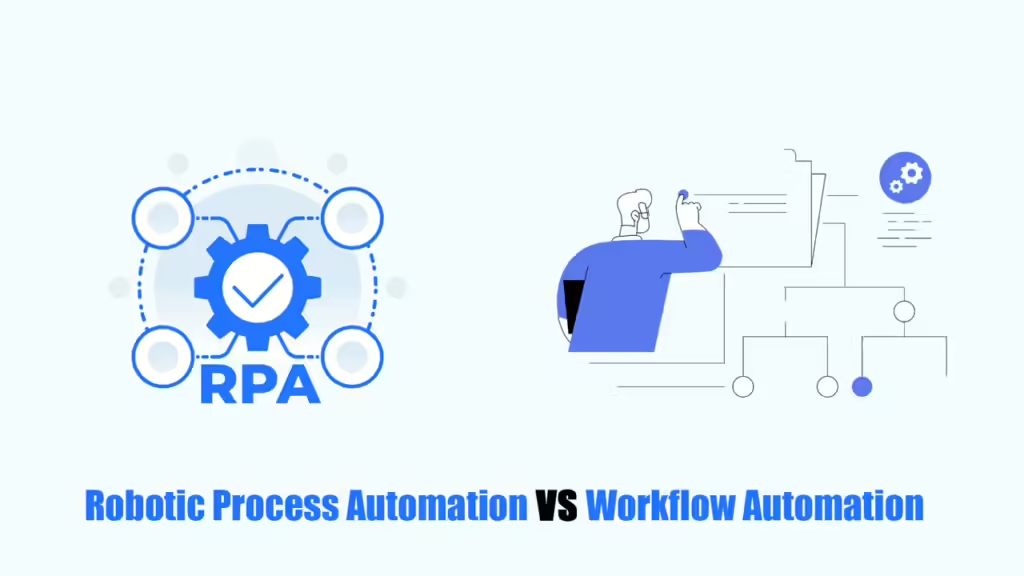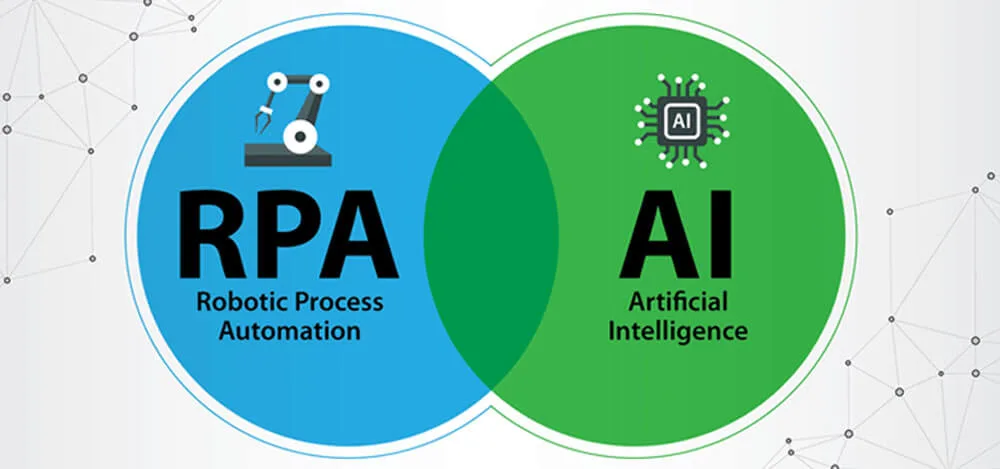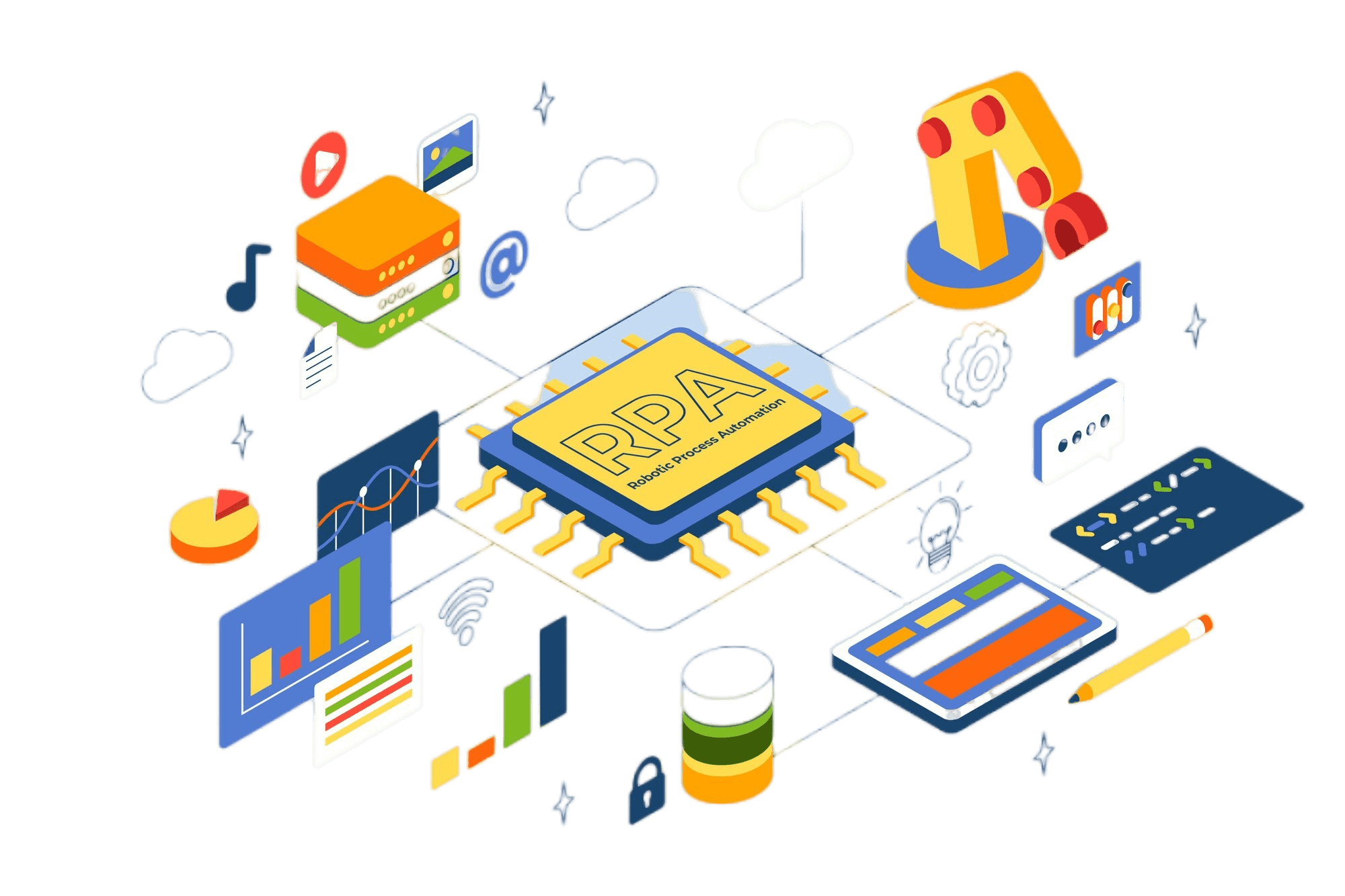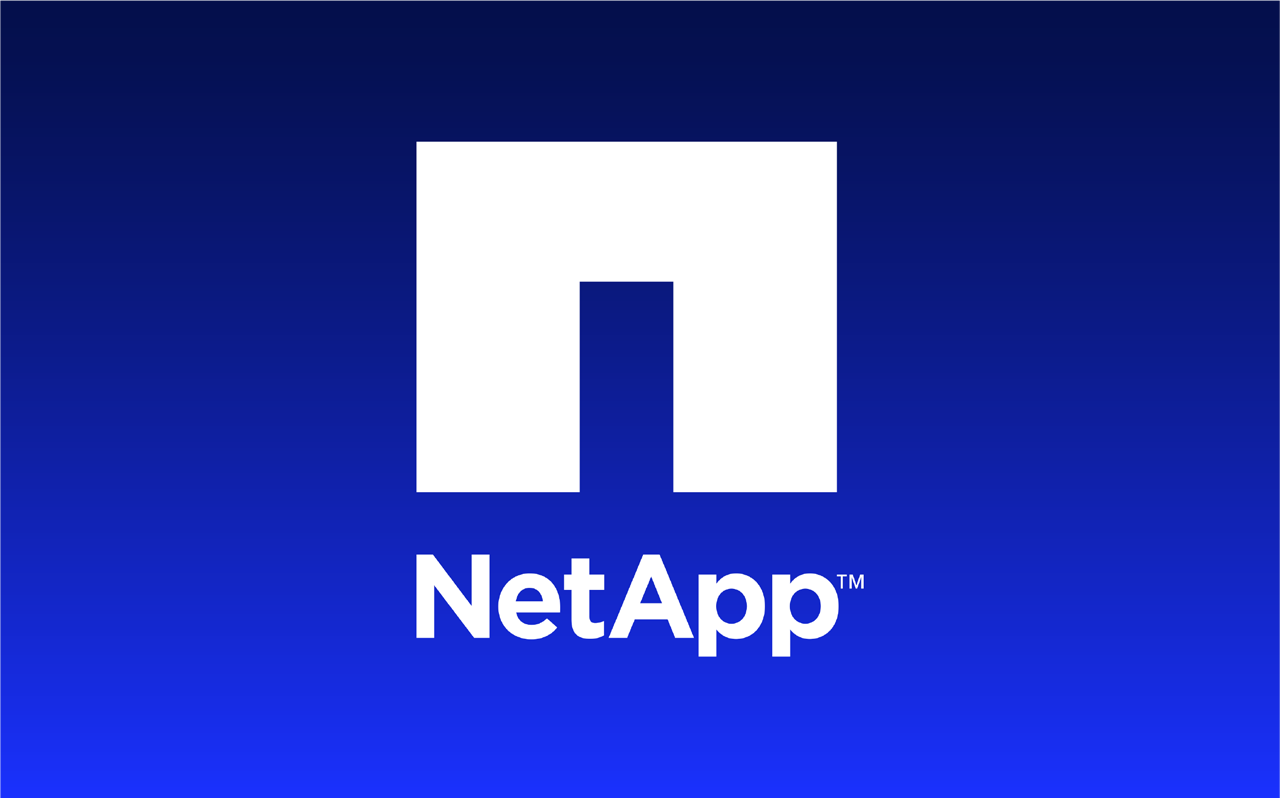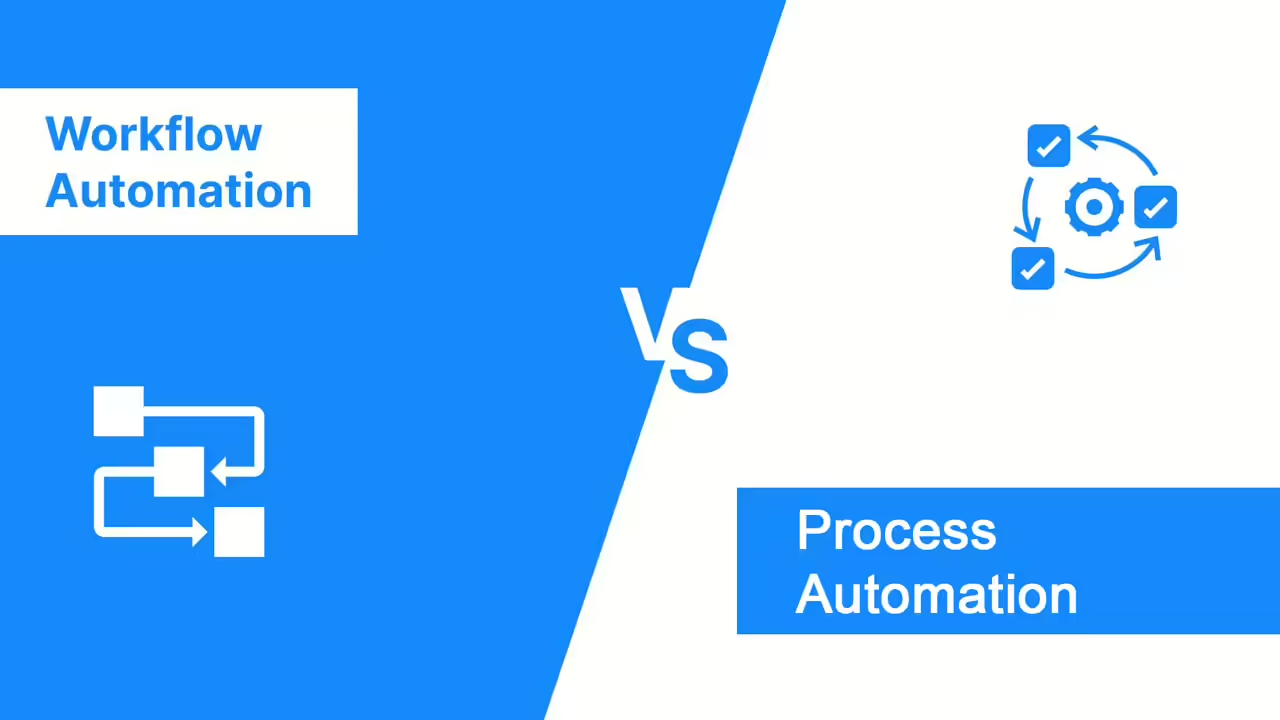Two important tools that help businesses improve quality, accuracy, and save money are RPA vs workflow automation. They might seem alike at first, but they play different roles in making business processes better.
But how do you choose which one you need: RPA software, a workflow automation tool, or maybe both? To know which one will help your business the most, you need to understand how they’re different.
In this article, we’ll explain these technologies so you can make good decisions for your business’s future.
What is RPA?
RPA is a type of software that uses “bots” to do tasks in different applications. These bots automate boring, repetitive tasks that people usually do. They interact with applications just like people do, following specific rules. RPA is easy to use and affordable, and it doesn’t need coding or complicated setup.
RPA is used in many different industries and departments to reduce mistakes, get things done faster, and improve overall efficiency. When combined with AI (Artificial Intelligence), it can even automate more complex tasks.
Here’s a real-life example: A big manufacturing company used the Nividous platform to automatically process lots of invoices. This reduced the need for people to do the work, made it more accurate, and still met quality standards. The platform used AI, RPA, and workflow automation to work seamlessly with the company’s ERP system, automatically matching invoices with purchase orders and goods receipts. This helped the finance team be more efficient and make better financial decisions.
Here are some of the main benefits of RPA:
- Lower costs and better efficiency
- More accuracy and fewer mistakes
- Faster work and turnaround times
- Better customer service and satisfaction
- Easier automation of complex tasks
- Less manual work and more productive employees
- Easier to follow regulations
What is Workflow Automation?
Workflow automation means designing, doing, and automating processes to make them work better. It’s about automating a whole series of tasks, not just single parts. Workflows follow a set of rules and triggers, connecting people, tasks, data, and files. Workflow automation tools let you create these workflows using a simple drag-and-drop interface. This removes mistakes and problems caused by doing things manually.
You can use workflow automation for many different business tasks, like onboarding new employees or customers, processing orders, delivering products, and handling customer service questions.
Let’s see how workflow automation can help with onboarding new employees:
New employee onboarding usually takes a lot of time and involves contracts, introductions, training, and getting office supplies. But when you automate these tasks, the process goes much faster.
- Everyone involved can easily see the progress and access new employee information as soon as it’s added to the system.
- New hires automatically get important documents before they start working.
- The next steps in the onboarding process are triggered automatically, assigning tasks and approvals for the first few weeks.
- Hiring managers get automatic notifications when new employees complete tasks or move to the next step, so they don’t have to bother HR with questions.
Comparison: RPA vs Workflow Automation
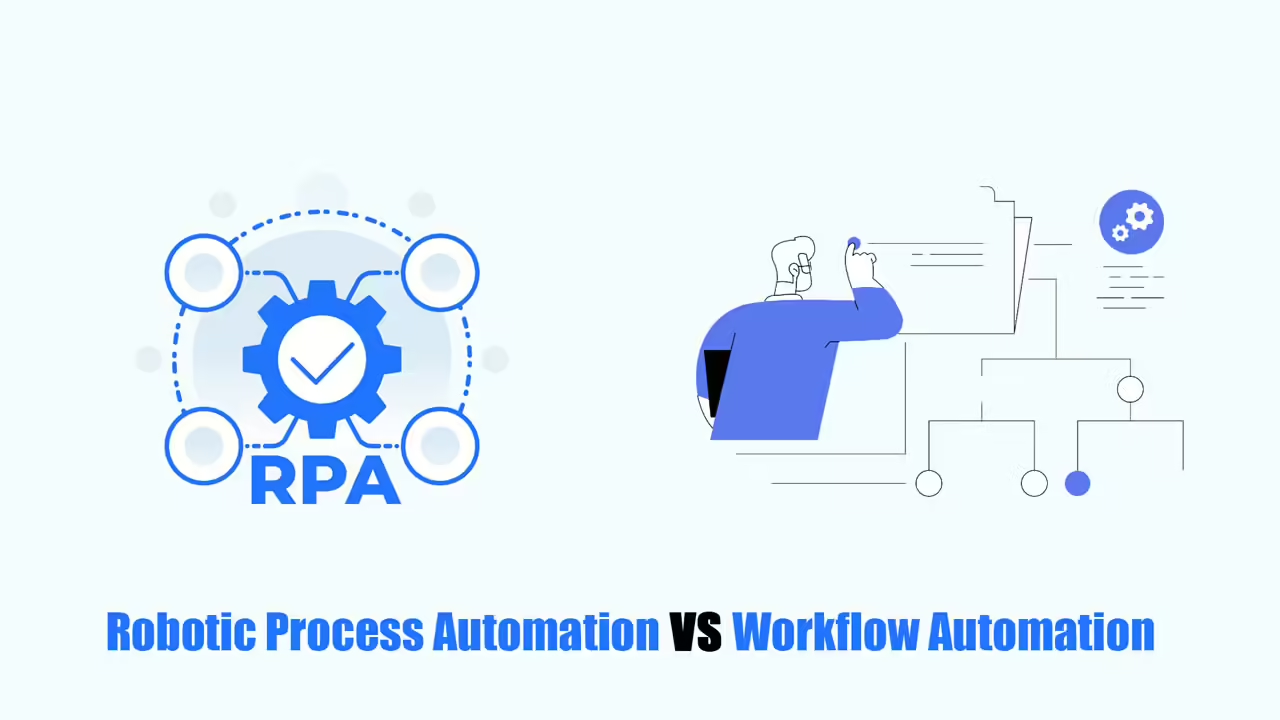
RPA vs workflow automation are like different members of a team. RPA is like a specialist who’s really good at specific tasks, while workflow automation is like a manager who makes sure all the different tasks work together smoothly.
Let’s see how they’re similar and different.
Similarities
Both workflow automation and robotic process automation are great at making business tasks easier and faster. They do things automatically, so the work gets done quicker and the whole company runs smoother.
Differences
While both RPA vs workflow automation help businesses work better, they’re different in how they work and what they’re good at.
What they’re good at: Workflow automation is better for tasks where people need to work together, make choices, and interact. It’s great for jobs that need a human touch and can be customized. RPA is perfect for tasks that are done the same way every time and don’t need much thinking or decision-making from people.
How they work: Workflow automation shines in complex processes that have many steps, choices, approvals, or teamwork across different departments. RPA is best for simple, repetitive tasks that don’t need complex decisions or approvals.
Cost and complexity: RPA is cheaper and easier to set up and change for your business. Workflow automation is more complex and expensive but is a good investment for companies that have many different workflows.
Here’s a table to compare RPA vs workflow automation:
| Feature | Workflow Automation | RPA |
| What it automates | Whole business processes, focuses on making a series of tasks smoother. | Individual tasks, especially repetitive ones like typing in data. |
| Complexity and flexibility | Handles complex processes, connects different systems; can change to fit new rules and situations. | Best for tasks that don’t change much; less flexible in changing to new conditions. |
| How it works with systems | Deeply connects with business systems to get and use data across different platforms. Makes different systems work together. | Works with systems at a basic level, like a person; doesn’t need to be deeply connected to other systems. |
| Need for people | Might need people to make decisions for complex tasks or exceptions. | Made for minimal human help, does tasks completely on its own. |
| Setup and scaling | Harder to set up because it does more, but can easily handle bigger projects. | Easier and quicker to set up for specific tasks, but might not work well for really big projects. |
How Can RPA vs Workflow Automation Work Together?
A workflow automation tool helps avoid communication problems that cause delays and mistakes. When tasks are standardized and done automatically, employees can manage their work with less supervision.
But, if you use RPA bots to automate even more tasks within the workflow, like entering data or handling invoices, you can save even more time and money. RPA bots are much faster than humans and free up employees to do more important work. With both RPA and workflow automation, you can expect more accurate results, higher productivity, fewer errors, and better efficiency overall.
FAQs
What are the Differences between RPA and Automation?
RPA is a type of automation that uses computer programs (bots) to do repetitive tasks that follow rules.
Other ways to automate business processes include:
- Workflow Automation
- Business Intelligence (BI)
- Business Process Management (BPM)
What are the Differences between RPA and Workflow Orchestration?
Workflow orchestration, sometimes called workflow optimization, means organizing and controlling many different business tasks. RPA, on the other hand, focuses on automating single tasks within those processes.
In conclusion, RPA is suitable for simple, rule-based tasks, while workflow automation is good for complex processes.
Before you choose the right automation tool, you should determine what your company’s goals are, what you need digitally, and how things are currently done. Once you’ve figured out the features of RPA vs workflow automation, you can choose the best solution for your company.
Read more:






